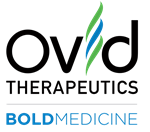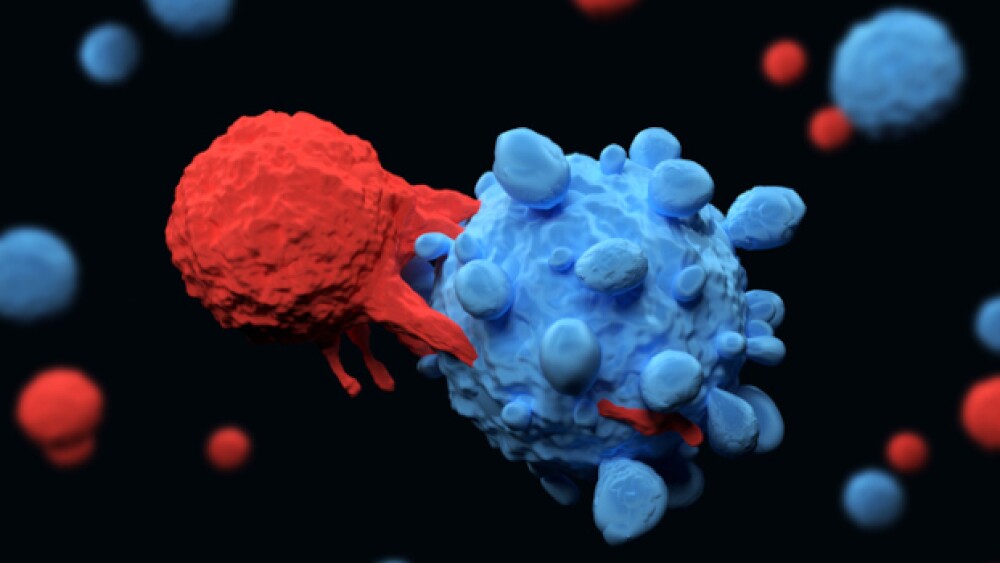Ovid Therapeutics Inc., a biopharmaceutical company committed to developing medicines that transform the lives of people with rare neurological diseases, announced positive topline results from the signal-finding Phase 2 ROCKET trial of OV101, a novel delta -selective GABAA receptor agonist, in males with Fragile X syndrome.
- OV101 met the study’s primary objective of safety and tolerability
- OV101 produced statistically significant reductions in behavioral and functional symptoms in individuals with Fragile X syndrome
- Results support the continued development of OV101 in Fragile X syndrome
NEW YORK, May 07, 2020 (GLOBE NEWSWIRE) -- Ovid Therapeutics Inc. (NASDAQ: OVID), a biopharmaceutical company committed to developing medicines that transform the lives of people with rare neurological diseases, today announced positive topline results from the signal-finding Phase 2 ROCKET trial of OV101 (gaboxadol), a novel delta (δ)-selective GABAA receptor agonist, in males with Fragile X syndrome. Fragile X syndrome is the most common inherited form of intellectual disability and autism, with no approved therapies. In addition, Ovid today provided preliminary findings from SKYROCKET, a non-drug interventional study in Fragile X syndrome.
The ROCKET trial was a signal-finding, randomized, double-blind, parallel-group trial to evaluate the safety, tolerability and efficacy of OV101 in males ages 13 to 22 with a confirmed diagnosis of Fragile X syndrome. The primary objective of the study was to assess the safety and tolerability of OV101 over 12 weeks of treatment in three different active dose arms. The secondary objective was to evaluate changes in behavior after 12 weeks of treatment. A total of 23 participants were randomized into the study across three active-arm dose cohorts: OV101 5 mg once-daily (QD), OV101 5 mg twice-daily (BID), and OV101 5 mg three-times-daily (TID).
OV101 met its primary objective and appeared to be well tolerated over 12 weeks of treatment with no serious adverse events reported across all three dose cohorts. OV101 demonstrated a statistically significant effect on secondary behavioral endpoints in the three combined study groups as follows: 26.2% mean improvement in the Aberrant Behavior Checklist-Community for Fragile X syndrome (ABC-CFXS) total score from baseline to week 12 (p=0.002); and a 21.6% mean improvement in the Anxiety, Depression and Mood Scale (ADAMS) total score from baseline to week 12 (p=0.004). Statistically significant improvements were also observed across various ABC-CFXS and ADAMS subscales. In addition, OV101 demonstrated a statistically significant mean reduction of 0.4 in the Clinical Global Impressions Severity scale (CGI-S) total score (p=0.002) from baseline to week 12.
“The data from the ROCKET trial demonstrate that OV101 may have a meaningful effect on improving the lives of some individuals living with Fragile X syndrome,” said Dr. Elizabeth Berry-Kravis, Professor of Pediatrics and Neurological Sciences and Co-Director of the Molecular Diagnostics Section of the Genetic Laboratory at Rush University Medical Center. “Fragile X is a challenging neurodevelopmental genetic condition, with complex symptomatology that significantly impacts patients and their families. I am encouraged by the safety results of this Phase 2 study of OV101 and am excited to further investigate its therapeutic potential in patients living with Fragile X syndrome.”
“Developing treatment options in Fragile X syndrome has historically been challenging, and there continues to be a high unmet medical need,” said Amit Rakhit, M.D., MBA, President and Chief Medical Officer of Ovid Therapeutics. “This was the first interventional clinical study of OV101 in the Fragile X population, and we are encouraged by the safety profile and the positive efficacy signals we see across multiple behavior domains from this small, active-arm study. Lower and middle dosing regimens appear to be superior to the higher, three-times-daily dose, which is consistent with the emerging profile of OV101. We are in the process of further evaluating which specific dose to advance in future studies, and we look forward to moving this program forward to discussions with regulators to determine next steps for the development of OV101 in the Fragile X indication.”
About the Phase 2 ROCKET Trial
The Phase 2 ROCKET trial was a signal-finding, randomized, double-blind, parallel-group trial to evaluate the safety, tolerability and efficacy of OV101 in males between ages 13 to 22 with a confirmed diagnosis of Fragile X syndrome. There were no females included in the study. The study randomized 23 participants across three active-arm dose cohorts: OV101 5 mg once-daily (n=7), OV101 5 mg twice-daily (n=8), and OV101 5 mg three-times-daily (n=8). The majority of treated patients were Caucasian (87%), and the mean age was 17 years. All participants in the study had a baseline CGI-S score of ≥ 4, with a mean baseline CGI-S score of ≥5, as well as an intelligence quotient (IQ) of <75, which corresponds to a relatively more severely impaired population of individuals with Fragile X syndrome. Three participants discontinued participation in the study—one for an adverse event (increased agitation) in the twice-daily arm, and two voluntarily withdrew for either noncompliance with study drug (once-daily arm) or increased agitation at study clinic visits (three-times-daily arm). Compliance with the study drug was high (95%).
Primary Endpoint: Safety and Tolerability
The study met its primary endpoint of safety and tolerability, and OV101 appeared to be well tolerated over 12 weeks of treatment across all three dose cohorts. There were no serious adverse events or deaths reported in the study. The most common adverse events (AEs) included diarrhea (9%), irritability (9%), headache (13%), and upper respiratory infections (18%), with the majority of AEs reported as mild in severity (94%).
Topline Efficacy Endpoint Results
The secondary objective of the study was to evaluate changes in behavior after 12 weeks of treatment with three different doses of OV101. Data from the ABC-CFXS, ADAMS, CGI-S, and CGI-I rating scales are shown below.
Aberrant Behavior Checklist-Community for Fragile X Syndrome (ABC-CFXS):
A statistically significant improvement in the ABC-CFXS total score was observed from baseline to week 12 in the combined study groups.
Table 1: Mean change (and standard deviation, SD) in ABC-CFXS total score vs. baseline
| Baseline (n=17)** | Week 12 | Change | % Improvement (p value) | |
| Study Population (n=15)* | 65.7 (26.26) | 52.3 (30.42) | -15.5 (15.52) | 26.2% (23.16) (p=0.0017) |
| QD (n=4) | 80.5 (24.93) (n=4) | 60.5 (18.08) | -20.0 (22.7) | 21.7% (23.25) (p=0.1763) |
| BID (n=5) | 60.0 (34.26) (n=6) | 52.6 (44.01) | -8.8 (6.57) | 24.5% (21.99) (p=0.0402) |
| TID (n=6) | 62.1 (18.91) (n=7) | 46.7 (27.46) | -18.2 (16.17) | 30.7% (27.33) (p=0.0402) |
*Sample size (n) was different in study population due to patients who discontinue later in the study
** Individuals with minimal behavior symptoms as measured by the ABC-C scale (defined as baseline ABC-C total score <=16) were prespecified to be excluded from this planned analysis. Six individuals from the total cohort of 23 patients met this exclusion criteria.
In the ABC-CFXS subscales, patients in the three combined dose cohorts (n=15) showed statistically significant improvements from baseline to week 12 in lethargy/social withdrawal (38% improvement; p=0.001), hyperactivity (29% improvement; p=0.005), stereotypic behavior (21% improvement; p=0.01), and irritability (20% improvement; p=0.03) subscales. Percent change from baseline to week 12 on social avoidance (12% improvement; p=0.2499) and inappropriate speech (18% improvement; p=0.3216) subscales showed improvements but were not statistically significant.
Anxiety, Depression and Mood Scale (ADAMS):
A statistically significant improvement in the mean ADAMS total score was observed from baseline to week 12 in the combined study groups.
Table 2: Mean change (and standard deviation, SD) in ADAMS score vs. baseline
| Baseline (n=23) | Week 12 | Change | % Change (p value) | |
| Study Population (n=20)* | 24.7 (12.07) | 18.3 (9.47) | -7.0 (9.54) | -21.6% (31.700) (p=0.0039) |
| QD (n=6) | 28.4 (17.19) (n=7) | 20.7 (10.09) | -10.5 (12.24) | -22.6% (42.08) (p=0.0897) |
| BID (n=7) | 20.1 (9.00) (n=8) | 15.4 (9.85) | -4.1 (5.64) | -18.9% (27.633) (p=0.1000) |
| TID (n=7) | 26.1 (9.13) (n=8) | 19.0 (9.29) | -6.9 (10.48) | -23.3% (30.488) (p=0.1341) |
*Sample size (n) was different in baseline population due to patients who discontinue later in the study
In the ADAMS subscales, patients also showed statistically significant mean improvements (SD) from baseline to week 12 in manic/hyperactive behavior (−1.7 (1.95); p=0.001), social avoidance (−2.2 (3.47); p=0.01) and general anxiety (−2.5 (2.87); p=0.001) subscales. Changes from baseline to week 12 on the compulsive behavior (−0.6 (1.98); p=0.1921) and the depressed mood (−0.1 (2.69); p=0.8699) subscales were not statistically significant.
Clinical Global Impression Scale-Severity (CGI-S) and Improvement (CGI-I):
A statistically significant improvement was observed in the mean (SD) CGI-S total score (−0.4 (0.50); p=0.002) from baseline to week 12. In the CGI-S subscales, statistically significant mean improvements were observed from baseline to week 12 in the communication (−0.6 (0.68); p=0.001), anxiety (−0.5 (0.76); p=0.008), attention deficit hyperactivity disorder (−0.5 (0.83); p= 0.025), and activities of daily living (−0.3 (0.57); p=0.03) domains. Change from baseline to week 12 on the disruptive behavior (−0.7 (1.59); p=0.06) and repetitive and restrictive behaviors (−0.2 (0.49); p=0.1864) subscales did not reach statistical significance. Additionally, compared to the baseline measurement, 60% of participants who received OV101 were identified as CGI-I responders at week 12 (defined as improvement in the CGI-I by a response of “2-Much Improved” (40%), or “3-Minimally Improved” (20%).
SKYROCKET
The SKYROCKET trial was a non-interventional study evaluating the appropriateness of multiple scales used in Fragile X syndrome and was conducted in parallel to the ROCKET study. The study enrolled 13 males ages 8 to 29 years (mean age 17 years) with a confirmed diagnosis of Fragile X syndrome.
The primary objective was to evaluate the suitability and reliability of different scales for the assessment of behavior, sleep, and functioning and also to determine which tools would be the most appropriate for future interventional clinical efficacy trials of individuals with Fragile X syndrome.
The participating clinicians and caregivers were aware that the trial was non-interventional. The mean changes from baseline to week 12 were evaluated in the ABC-C total and subscale scores, the ADAMS subscale scores, and the CGI-S subscale scores, as well as the mean change in CGI-I scores at week 12. Other exploratory scales were also assessed. High variability was seen among caregiver-administered assessments (ABC-C, ADAMS) compared to clinician-assessed scales (CGI-I, CGI-S). The caregiver-administered assessments showed a placebo response as seen with previous Fragile X syndrome trials. In these other trials, placebo response rates were highly variable. Therefore, the SKYROCKET trial data will help inform future study design, including potential endpoints and measures to mitigate placebo response.
Next Steps
Based on the results reported today, Ovid Therapeutics believes that OV101 has the potential to represent a compelling new therapeutic option for individuals with Fragile X syndrome. Given the lack of an approved medication and the high unmet need in Fragile X syndrome, the Company plans to request meetings with regulatory authorities to discuss the development path and registration pathway for OV101 for the treatment of Fragile X syndrome.
About the Aberrant Behavior Checklist-Community Scale for FXS (ABC-CFXS)
The Aberrant Behavior Checklist-Community for FXS (ABC-CFXS) is a scale used to measure caregiver assessment of maladaptive behavior. Factor analytic examination of the Aberrant Behavior Checklist-Community (ABC-C) within a Fragile X syndrome (FXS) population yields a 6-factor solution consisting of the following maladaptive behavior domains: social avoidance, stereotypic behavior, lethargy/social withdrawal, irritability, hyperactivity, and inappropriate speech. Items are rated on a 4-point Likert scale ranging from 0 “not a problem at all” to 3 “the problem is severe in degree.”
About the Anxiety, Depression, and Mood Scale (ADAMS)
The Anxiety, Depression, and Mood Scale (ADAMS) is a factor-derived measure of anxiety and mood symptoms that has been validated in individuals with FXS. Caregivers are asked to rate the frequency and severity of 28 items on a scale of 0 “not a problem” to 3 “severe problem.” The ADAMS produces a total score and 5 subscale scores: manic/hyperactive behavior, depressed mood, social avoidance, general anxiety, and obsessive/compulsive behavior.
About the Clinical Global Impression Scale-Severity (CGI-S) and Improvement (CGI-I)
The CGI was developed for clinicians in clinical trials to assess a patients’ global functioning before and after an intervention. At baseline, clinicians rate the severity of the patient’s current symptoms (CGI-S), while during the study, clinicians assess the CGI-S, as well as how much the patient’s illness has changed (improved or worsened) relative to the baseline state (CGI-I) using 7-point Likert-type scales. The CGI-S in the ROCKET/SKYROCKET trials has been adapted to capture specific characteristics commonly present in the FXS population, including the subdomains of anxiety, ADHD, communication/connectedness, repetitive and restrictive behavior, disruptive behavior, and activities of daily living. Lower scores on the CGI-S reflect better functioning (less severe), while lower scores on the CGI-I reflect greater improvements in symptoms. The CGI is well-validated and correlates with other standardized measures of psychiatric severity.
About Fragile X Syndrome
Fragile X syndrome is the most common inherited form of intellectual disability and autism, with a prevalence of 1 in 3,600 to 4,000 males and 1 in 4,000 to 6,000 females in the United States. Individuals with Fragile X syndrome often have a range of behavioral challenges, such as cognitive impairment, anxiety, mood swings, hyperactivity, attention deficit, poor sleep, self-injury and heightened sensitivity to various stimuli, such as sound. Additionally, individuals with Fragile X syndrome are prone to comorbid medical issues including seizures and sleep disturbance. Fragile X syndrome results from mutations in the FMR1 gene, which blocks expression of the Fragile X Mental Retardation Protein (FMRP), an important protein in GABA synthesis. There are no FDA-approved therapies for Fragile X syndrome, and treatment primarily consists of behavioral interventions and pharmacologic management of symptoms.
In studies of individuals with Fragile X syndrome and experimental models, extrasynaptic GABA levels are abnormally reduced, and there is also dysregulation of GABA receptors. This ultimately contributes to a decrease in tonic inhibition, causing the brain to become inundated with signals and lose the ability to separate background noise from critical information.
About OV101 (gaboxadol)
OV101 is believed to be the only delta (δ)-selective GABAA receptor agonist in development and the first investigational drug to specifically target the disruption of tonic inhibition, a central physiological process of the brain that is thought to be the underlying cause of certain neurodevelopmental disorders. OV101 has been demonstrated in laboratory studies and animal models to selectively activate the δ-subunit of GABAA receptors, which are found in the extrasynaptic space (outside of the synapse), and thereby impact neuronal activity through modulation of tonic inhibition.
Ovid is developing OV101 for the treatment of Angelman syndrome and Fragile X syndrome to potentially restore tonic inhibition and thereby address several core symptoms of these disorders. In both these syndromes, the underlying pathophysiology includes disruption of tonic inhibition modulated through the δ-subunit of GABAA receptors. In preclinical studies, it was observed that OV101 improved symptoms of Angelman syndrome and Fragile X syndrome. This compound has also previously been tested in more than 4,000 patients (more than 1,000 patient-years of exposure) and was observed to have favorable safety and bioavailability profiles. Ovid is conducting a pivotal Phase 3 clinical trial with OV101 in Angelman syndrome (NEPTUNE) and has completed a Phase 2 signal-finding clinical trial with OV101 in Fragile X syndrome (ROCKET).
The FDA has granted Orphan Drug and Fast Track designations for OV101 for both the treatment of Angelman syndrome and Fragile X syndrome. The European Commission (EC) has granted orphan drug designation to OV101 for the treatment of Angelman syndrome. The U.S. Patent and Trademark Office has granted Ovid patents directed to methods of treating Angelman syndrome and Fragile X syndrome using OV101. The issued patents expire in 2035 without regulatory extensions.
About Ovid Therapeutics
Ovid Therapeutics Inc. is a New York-based biopharmaceutical company using its BoldMedicine® approach to develop medicines that transform the lives of patients with rare neurological disorders. Ovid has a broad pipeline of potential first-in-class medicines. The Company’s most advanced investigational medicine, OV101 (gaboxadol), is currently in clinical development for the treatment of Angelman syndrome and Fragile X syndrome. Ovid is also developing OV935 (soticlestat) in collaboration with Takeda Pharmaceutical Company Limited for the potential treatment of rare developmental and epileptic encephalopathies (DEE). For more information on Ovid, please visit http://www.ovidrx.com/.
Forward-Looking Statements
This press release includes certain disclosures that contain “forward-looking statements,” including, without limitation, statements regarding: advancing and commercializing Ovid’s product candidates, progress, timing, scope and the development and potential benefits of Ovid’s product candidates; and the anticipated reporting schedule of clinical data regarding Ovid’s product candidates. You can identify forward-looking statements because they contain words such as “will,” “appears,” “believes” and “expects.” Forward-looking statements are based on Ovid’s current expectations and assumptions. Because forward-looking statements relate to the future, they are subject to inherent uncertainties, risks and changes in circumstances that may differ materially from those contemplated by the forward-looking statements, which are neither statements of historical fact nor guarantees or assurances of future performance. Important factors that could cause actual results to differ materially from those in the forward-looking statements include uncertainties in the development and regulatory approval processes, and the fact that initial data from clinical trials may not be indicative, and are not guarantees, of the final results of the clinical trials and are subject to the risk that one or more of the clinical outcomes may materially change as patient enrollment continues and/or more patient data become available. Additional risks that could cause actual results to differ materially from those in the forward-looking statements are set forth in Ovid’s filings with the Securities and Exchange Commission under the caption “Risk Factors”. Such risks may be amplified by the COVID-19 pandemic and its potential impact on Ovid’s business and the global economy. Ovid assumes no obligation to update any forward-looking statements contained herein to reflect any change in expectations, even as new information becomes available.
Contacts
Investors and Media:
Ovid Therapeutics Inc.
Investor Relations & Public Relations
irpr@ovidrx.com
Or
Investors:
Steve Klass
Burns McClellan, Inc.
sklass@burnsmc.com
(212) 213-0006
Media:
Katie Engleman
1AB
katie@1abmedia.com
(919) 333-7722





